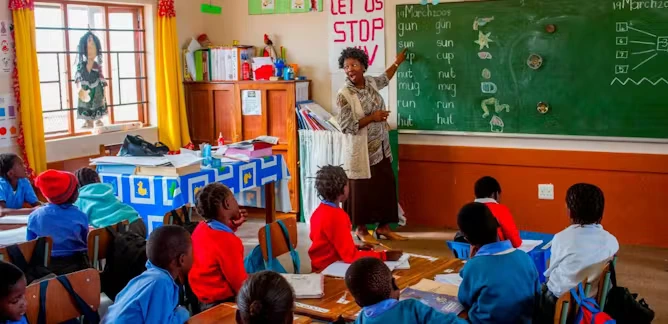The Theory of Balanced Teacher Talk Time (TTT) and Student Talk Time (STT) in English Classrooms

In the realm of language education, one of the critical components affecting the dynamics of teaching and learning is the balance between Teacher Talk Time (TTT) and Student Talk Time (STT). This theory posits that an effective English classroom must strategically balance the amount of time a teacher spends talking versus the time students engage in conversation. Understanding and implementing this balance can significantly enhance language acquisition and student engagement.
Understanding TTT and STT
TTT refers to the time a teacher spends delivering instructions, explanations, and feedback in the classroom. While TTT can provide essential information and create structure, excessive TTT can hinder student participation and limit opportunities for language practice. On the other hand, STT encompasses the time students spend speaking, interacting, and engaging in discussions. High levels of STT foster an environment where students can practice language skills, develop confidence, and take ownership of their learning.
The Importance of Balance
Achieving a balance between TTT and STT is vital for several reasons:
- Promotes Student Engagement: When students are given ample opportunities to speak, they are more likely to be engaged and invested in their learning. High STT allows students to express their thoughts, ask questions, and collaborate with peers, making the learning experience more dynamic.
- Facilitates Language Practice: Language acquisition heavily relies on practice. A balanced approach encourages students to practice speaking in a real-world context, which is essential for developing fluency and confidence in their language abilities.
- Encourages Critical Thinking: When teachers minimize their talk and encourage students to discuss, debate, and explore ideas, they promote critical thinking skills. Students learn to articulate their thoughts and consider multiple perspectives, which deepens their understanding of the language and subject matter.
- Supports Differentiated Learning: Every student has different language proficiency levels and learning styles. By fostering a balance between TTT and STT, teachers can cater to diverse needs, allowing students to learn at their own pace and engage in peer support.
Tips for Achieving Balance
To effectively balance TTT and STT in the English classroom, teachers can consider the following strategies:
- Plan Interactive Activities: Incorporate group work, pair discussions, and role-plays that require students to interact and communicate. This not only promotes STT but also encourages collaboration among students.
- Use Open-Ended Questions: Encourage student participation by asking open-ended questions that require more than yes or no answers. This approach fosters discussion and allows students to elaborate on their thoughts.
- Set Time Limits for TTT: Be mindful of the amount of time spent lecturing or explaining concepts. Setting specific time limits for TTT can help ensure that students have ample opportunity to speak.
- Encourage Peer Teaching: Allow students to take turns leading discussions or teaching mini-lessons. This not only increases STT but also builds confidence and reinforces learning through teaching.
- Provide Feedback: After activities, offer constructive feedback on both content and language use. This can help students reflect on their speaking skills and understand areas for improvement.
The theory of balancing Teacher Talk Time and Student Talk Time in English classrooms underscores the importance of student engagement and active participation in the language learning process. By consciously implementing strategies that promote this balance, educators can create an interactive and effective learning environment that fosters language development, critical thinking, and student confidence.
Challenges in Balancing TTT and STT
While the benefits of balancing TTT and STT are clear, achieving this balance is not without its challenges. Teachers often face several obstacles that can disrupt the equilibrium between their talk time and student participation. Understanding these challenges is the first step toward overcoming them.
- Classroom Size and Dynamics: In larger classes, it can be difficult to ensure that all students have equal opportunities to speak. Some students may dominate discussions, while others may remain silent due to shyness or lack of confidence. Teachers must find ways to manage these dynamics to ensure equitable participation.
- Time Constraints: Curriculum demands and time limitations can pressure teachers to cover a lot of material quickly, often leading to increased TTT. Balancing the need to deliver content with the need for student interaction requires careful planning and prioritization.
- Student Proficiency Levels: In classrooms with mixed proficiency levels, some students may struggle to participate actively, while others may find the pace too slow. Teachers need to differentiate their instruction to cater to varying levels of language ability, ensuring that all students can engage meaningfully.
- Cultural Factors: In some cultures, students may be less inclined to speak up in class due to societal norms or educational traditions that emphasize teacher authority. Teachers must be sensitive to these cultural differences and create a supportive environment that encourages participation.
Strategies to Overcome Challenges
To address these challenges and maintain a healthy balance between TTT and STT, teachers can adopt several strategies:
- Use Think-Pair-Share: This technique allows students to think about a question individually, discuss their thoughts with a partner, and then share with the larger group. It ensures that even shy students have a chance to participate and builds confidence in speaking.
- Implement Structured Turn-Taking: In larger classes, structured turn-taking can help manage participation. For example, teachers can use tools like speaking sticks or digital platforms that randomly select students to answer questions, ensuring everyone gets a chance to speak.
- Scaffold Language Use: For students with lower proficiency levels, providing sentence starters, vocabulary lists, or visual aids can help them participate more confidently. Gradually reducing these supports as students become more proficient encourages independent language use.
- Create a Safe and Inclusive Environment: Building a classroom culture where mistakes are seen as part of the learning process can encourage more students to participate. Teachers should model positive reinforcement and celebrate efforts, not just correct answers.
- Leverage Technology: Digital tools like discussion forums, chat rooms, or language learning apps can provide additional platforms for students to practice speaking and writing. These tools can be particularly useful for students who are hesitant to speak in front of the class.
Measuring the Balance
To ensure that the balance between TTT and STT is effective, teachers can use various methods to measure and reflect on their classroom practices:
- Self-Reflection and Recording: Teachers can record their lessons and review them to analyze the ratio of TTT to STT. This self-reflection can help identify patterns and areas for improvement.
- Student Feedback: Regularly soliciting feedback from students about their participation levels and comfort in speaking can provide valuable insights. Anonymous surveys or suggestion boxes can encourage honest responses.
- Peer Observations: Inviting colleagues to observe lessons and provide feedback on the balance of TTT and STT can offer an external perspective and new ideas for improvement.
- Data Collection: Using tools like timers or apps to track the amount of time spent on TTT versus STT can provide quantitative data. This data can be used to set goals and monitor progress over time.
Long-Term Benefits of Balanced TTT and STT
When teachers successfully balance TTT and STT, the long-term benefits extend beyond immediate language acquisition. These benefits include:
- Enhanced Student Autonomy: Students who are given ample opportunities to speak and engage in discussions develop greater autonomy in their learning. They become more proactive in seeking out opportunities to practice and improve their language skills.
- Improved Communication Skills: Regular practice in speaking and listening helps students develop not only language proficiency but also broader communication skills, such as active listening, empathy, and clarity of expression.
- Stronger Classroom Community: A balanced approach fosters a sense of community and collaboration among students. They learn to respect diverse perspectives and work together to achieve common goals.
- Greater Teacher Satisfaction: Teachers who see their students actively engaged and making progress in their language skills often experience greater job satisfaction. The classroom becomes a dynamic and interactive space where both teachers and students thrive.
Conclusion
The theory of balancing Teacher Talk Time and Student Talk Time is a cornerstone of effective language education. By prioritizing student engagement and active participation, teachers can create a learning environment that not only enhances language acquisition but also fosters critical thinking, confidence, and collaboration. While challenges exist, thoughtful strategies and reflective practices can help teachers achieve and maintain this balance. Ultimately, a well-balanced classroom benefits both students and teachers, leading to more meaningful and successful language learning experiences.
درباره مدیریت
لورم ایپسوم متن ساختگی با تولید سادگی نامفهوم از صنعت چاپ، و با استفاده از طراحان گرافیک است، چاپگرها و متون بلکه روزنامه و مجله در ستون و سطرآنچنان که لازم است.
نوشته های بیشتر از مدیریت


دیدگاهتان را بنویسید